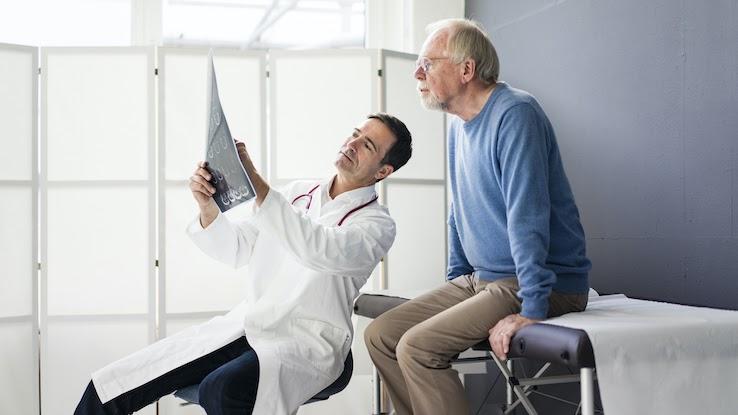When Can I Give Blood Again Calculator

Clotting is the way that your body naturally stops wounds from bleeding and begins the healing process after an injury that amercement or breaks your blood vessels. The claret clots that form at the site of an injury usually break downward after the wound heals. However, blood clots tin can sometimes form in unnecessary places. And, they might not dissolve properly. This can lead to harmful issues in your trunk.
Nearly ane million people are affected past claret clots every yr in the Us, and a third of those people may develop long-term issues from those blood clots. Considering blood clots are sometimes life-threatening and can even atomic number 82 to sudden death, knowing the warning signs can save your or a loved one'south life. Larn well-nigh some of the common signs of a blood clot to look out for.
Symptoms of Blood Clots
Blood clots can crusade y'all to develop a diverseness of different symptoms, and you might not feel all of them at the same time. Learning about the alarm signs of blood clots can help you get faster treatment that increases your chances of a healthy recovery.
Swelling and Pain in the Leg
Most blood clots occur beginning in people'south legs before breaking off in pieces and traveling to their lungs. Recognizing and treating a blood jell while it's nevertheless in your leg could help yous forestall further issues that may occur. If your leg is swollen, considerably warmer than the other leg and has areas of redness, talk to your physician right away.
Shortness of Breath and Faster Breathing
If y'all have a blood clot, you lot might non experience symptoms until smaller clots break off from a larger clot and travel to your lungs. At this point, you may experience shortness of breath. Shortness of jiff may not be a symptom of a blood clot on its own, simply in combination with other blood clot symptoms it justifies seeing a md.
Sharp Chest Pain
Pain can occur under your breast bone or to the side of your chest when the blood clot reaches your lungs. It may feel like a burning, stabbing, agonized or heavy awareness. If you have this symptom, yous should prepare to encounter your healthcare provider. If the pain becomes severe, caput to the emergency room.
Increased Pain During Move
If you're experiencing pain in your chest that increases when you bend over, cough, laugh or move your chest in whatsoever mode, a blood clot may accept reached your lungs. In one case a claret jell reaches your lungs, your center rate picks up dramatically. If you detect yourself continuously experiencing an increased center charge per unit and you're not sure of the reason, contact your healthcare provider immediately.
Sudden Coughing
If you have a sudden, severe cough, it could indicate that a small piece of the blood jell has gone into your lungs. Coughing upwardly blood is always a very serious issue, especially if you suspect y'all might take a blood clot. Bloody mucus is besides a cause for concern. If the coughing doesn't go abroad, seek medical attention right away.
Causes of Blood Clots
You're at a higher risk of developing claret clots if you do or experience the following:
- Smoke
- Injure your legs
- Take birth control pills
- Utilize hormone replacement therapy
If you or someone in your family had a blood jell before, this tin can increment your risk of developing a second blood clot.
Diagnosing and Treating Blood Clots

Doctors can diagnose blood clots in a few different ways. If you're experiencing signs of a blood clot, your healthcare provider may perform a physical exam, blood tests or imaging tests. Imaging tests may include 10-rays, ultrasounds and CT scans. Looking into your medical history tin can also assistance your dr. diagnose both your blood clots and the reason for them.
There are a few different treatments that a medical professional may recommend. Medicines like anticoagulants and thrombolytics can help prevent and break apart blood clots. A thrombectomy, which is a surgery to remove a claret jell, may be necessary in some cases. The best treatment is based on the location and severity of the blood clots and whether they're in your veins or arteries.
There are diverse signs that you lot may have a claret jell. If y'all experience swelling in your leg, problems breathing or hurting in different areas of your body, y'all may have a blood jell. Make an date with a healthcare provider right away if you experience any of these symptoms.
Resource Links:
"Blood Clots | Hypercoagulability," Medline Plus
"Blood clots," Mayo Clinic
"Deep vein thrombosis," Medline Plus
"Data and Statistics on Venous Thromboembolism," Centers for Disease Control and Prevention
"Blood Clots," American Order of Hematology
petherickbrounrave.blogspot.com
Source: https://www.symptomfind.com/healthy-living/warning-signs-blood-clot?utm_content=params%3Ao%3D740013%26ad%3DdirN%26qo%3DserpIndex